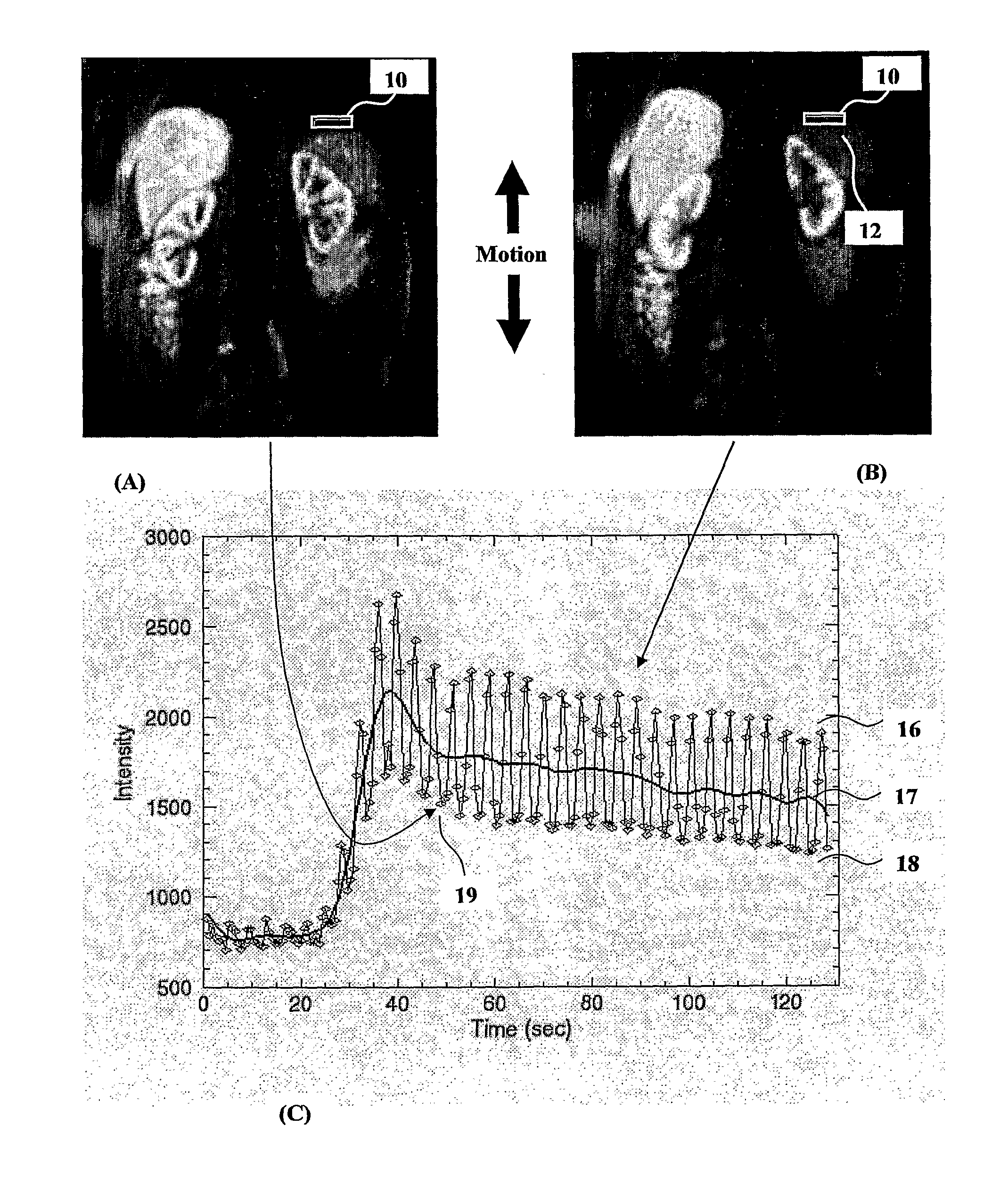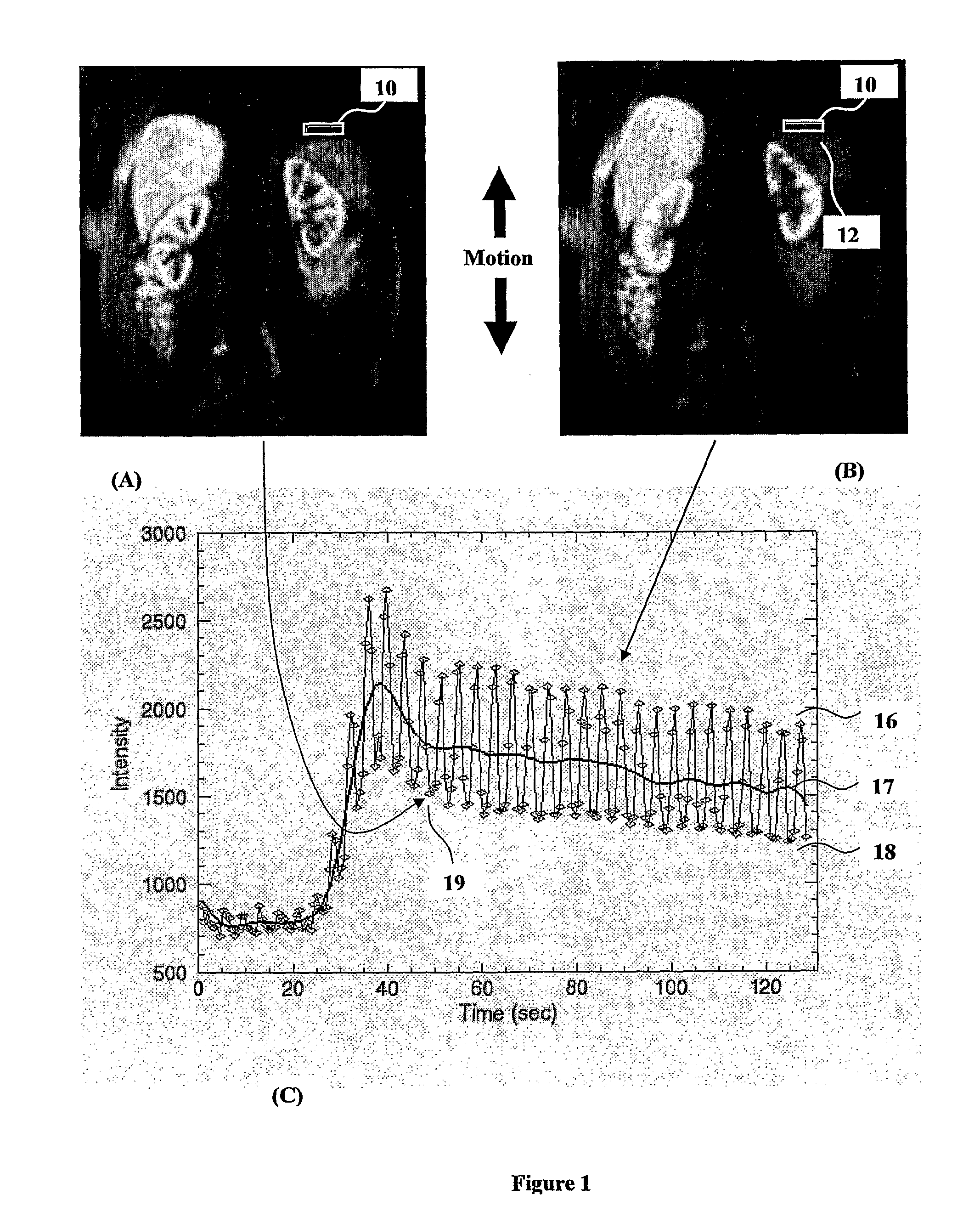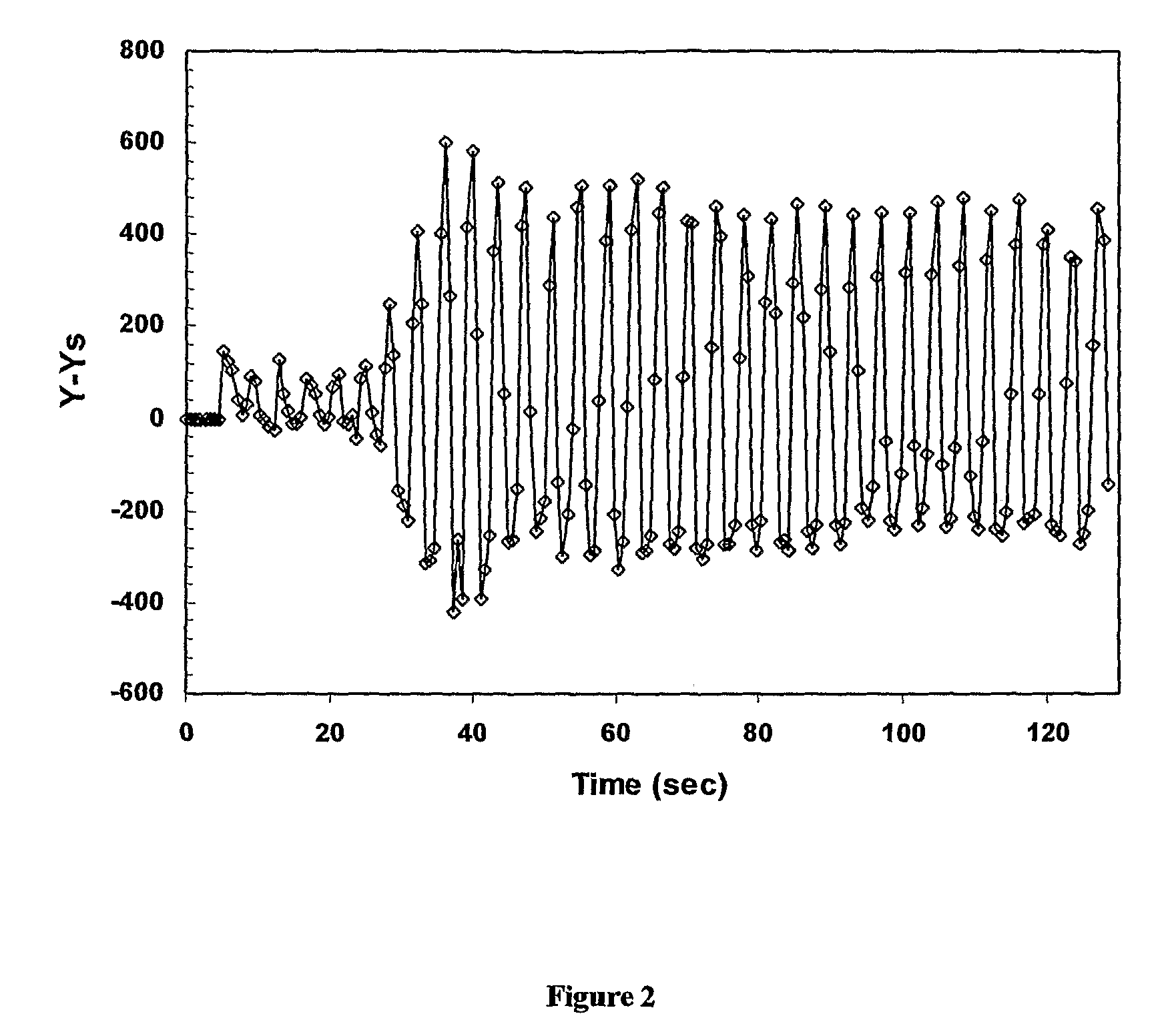Method and system of motion artefact compensation in a subject
a technology of compensation and motion artefacts, applied in image data processing, instruments, character and pattern recognition, etc., can solve the problems of difficult to correct motion artefacts, and difficult to obtain data in the region of interest between successive time points at a fixed location, etc., to achieve the effect of maximising the detection of motion artefacts
- Summary
- Abstract
- Description
- Claims
- Application Information
AI Technical Summary
Benefits of technology
Problems solved by technology
Method used
Image
Examples
Embodiment Construction
[0049]In FIG. 1A there is shown a region of interest 10 over a portion of a subject, in this case an organ from a patient and in particular is located in a coronal plane on the upper edge of the organ 12. As the patient breathes the movement of the organ is mostly in an up and down motion which yields a minimum area of the organ in FIG. 1A which is within the ROI 10 at one time point and a maximum area of the organ in FIG. 1B within the same ROI 10 at another time point.
[0050]FIG. 1C shows a plot against time of the fluctuation of average intensity of ROI 10 due to the up and down motion of the organ 12. The minimum signal intensity data points in FIG. 1A and data points representative of when the organ is in a similar position to that shown in FIG. 1A is represented by the low boundary profile 18. The maximum signal intensity data points in FIG. 1B and data points representative of when the organ is in a similar position to that shown in FIG. 1B is shown by the high boundary profil...
PUM
 Login to View More
Login to View More Abstract
Description
Claims
Application Information
 Login to View More
Login to View More - R&D
- Intellectual Property
- Life Sciences
- Materials
- Tech Scout
- Unparalleled Data Quality
- Higher Quality Content
- 60% Fewer Hallucinations
Browse by: Latest US Patents, China's latest patents, Technical Efficacy Thesaurus, Application Domain, Technology Topic, Popular Technical Reports.
© 2025 PatSnap. All rights reserved.Legal|Privacy policy|Modern Slavery Act Transparency Statement|Sitemap|About US| Contact US: help@patsnap.com



